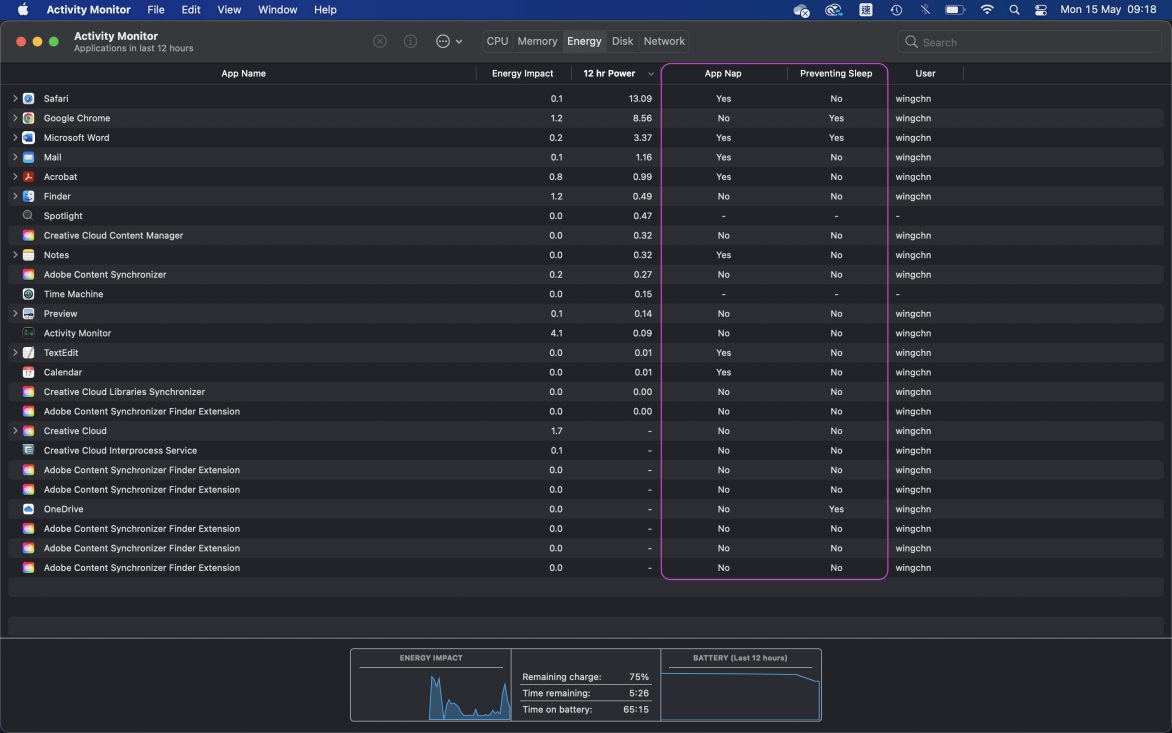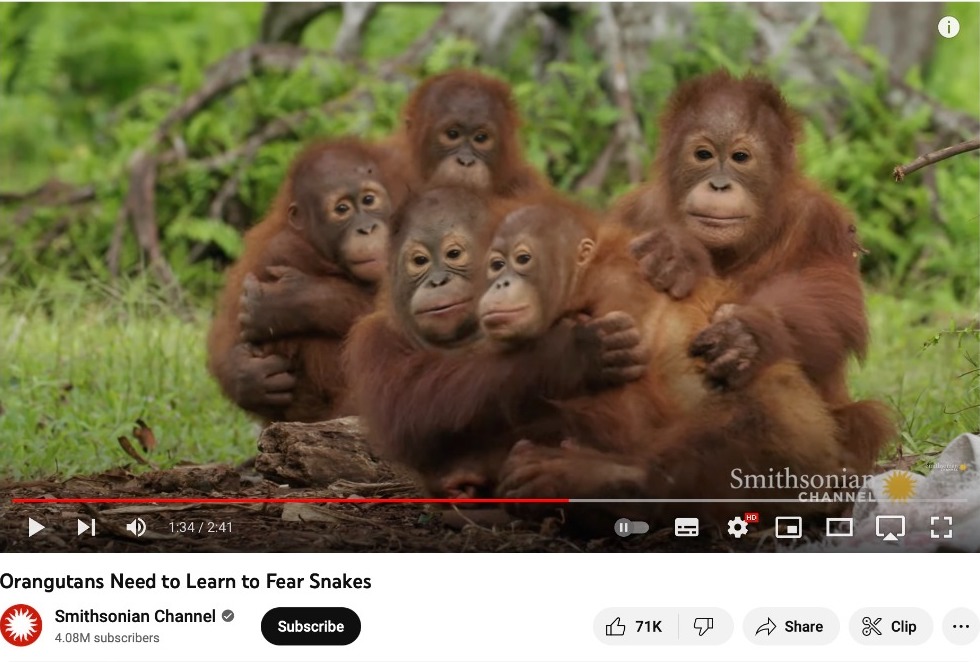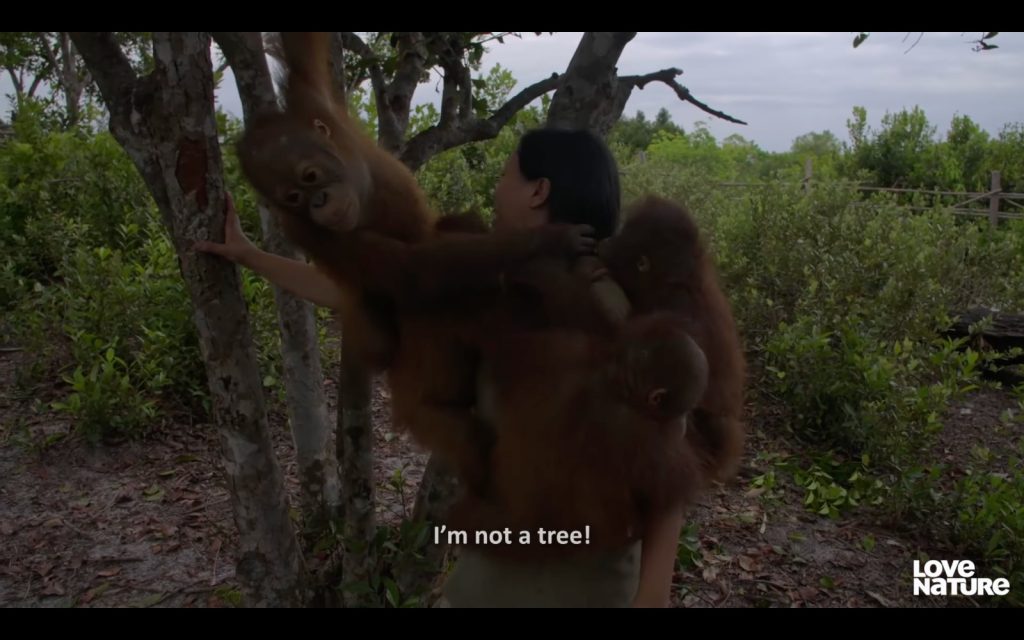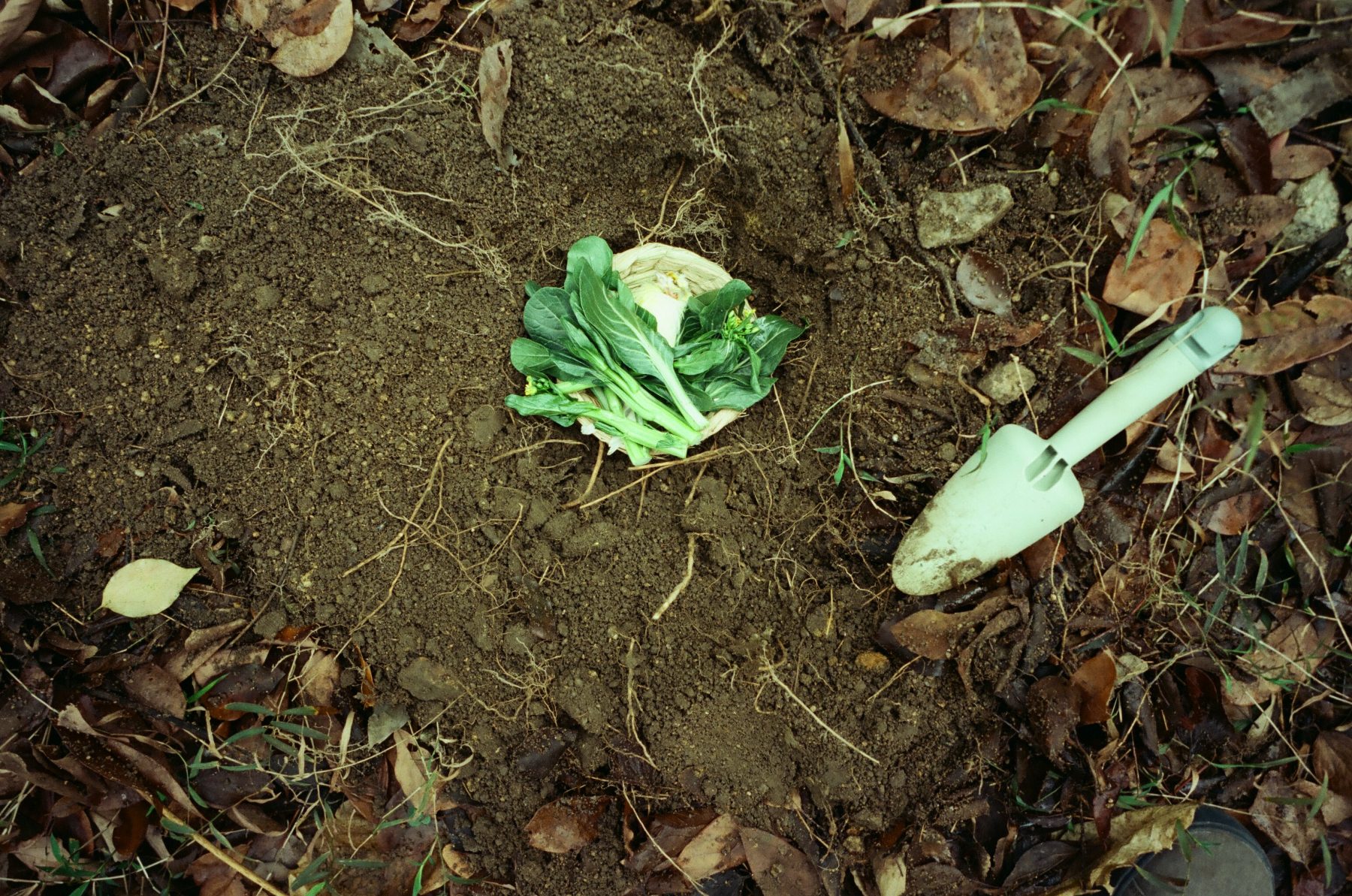
《叉電報》
第二期 2023年八月號
今期內容:
A.X. Ledesma〈霧靄歲月驚奇誌〉
Lesley-Anne Cao〈寫給邊緣戲院〉
Arianna Mercado 〈樹葉沙沙〉
文的 〈送別〉
編者的話
「位置未必精準;地圖不成比例;道路許見泥濘且濕滑」。如此引人入勝的註腳,出現在馬克思之墓所在地的遊客地圖上。特此感謝鼴鼠朋友相伴到墓地探險。本期《叉電報》的文字作品帶讀者穿梭於相類的迷霧風景中。先由九十年代樂隊 AMK 簡單而優美的歌詞 〈浪漫是你的本性〉 帶領熱身,設定氣氛;一如以往,我與Michelle黃湲婷一起把歌詞翻譯成英文。A.X. Ledesma的筆記寫下浪人在L城巧遇的奇異風景。轉錄的景觀是一個未境之地,明顯受物質束縛,卻同時偏離時間刻度,未知實體邊界。其文字流暢如同音樂,而文本的確置有配樂。Lesley-Anne Cao寫給邊緣戲院的信也暗示了某種聲音的存在。她的文字帶我們遊走於肉身之外、地獄邊緣的想像。她藉聲音選擇用字,又玩弄文字令自己成為一個不可靠的敘述者。Arianna Mercado的文章則揭示了紅毛猩猩的詰問。她叫讀者深思資源開採、物質條件及土地歸屬對紅毛猩猩、勞動者和農夫的意義。最後一篇文字有關離別與追憶,是文的寫下的超短篇故事。今期內容較上期抽象,但它們的可愛之處,正正在於文字所能精準表達抽象境況、拿捏氣氛的能力。
——陳穎華
Power Naps Post
Volume 1 Number 2 August 2023
In this issue
A.X. Ledesma Flashes of Astonishment in the Years of Fog and Mist
Lesley-Anne Cao To Cinema Limbo
Arianna Mercado Rustling in the Leaves
Di Liu A Story of Farewell
POWER NAPS NOTE
Locations are approximate. Map is not to scale. Paths can be muddy and wet. How fascinating. This is the descriptive legend in the visitor map of the cemetery where Karl Marx’s grave stands. I thank my mole friends for their companionship in the travel to these approximate locations. The contributions to this issue echo the alert, testing how we may move through landscape in fog, mist, limbo, rustling, or whispers of goodbye. It begins with the 90s band AMK’s simple yet beautiful lyrics to ‘You’re Romantic by Nature’; as usual, I thank Michelle Wong for helping with the translation. The lyrics set the ambience for the following writing. A.X. Ledesma’s notes picture a wanderer and a suspended landscape he encountered. While clearly bound by material, the transcribed landscape escapes the exactitude of borders and time. The ground rolls up, as the text turns. It is hard to tell whether they are notes or musical notations. The text comes with a soundtrack. Lesley-Anne Cao’s letter hints at the sonic, too. A part of her text imagines what it is like to be beyond the flesh, in limbo. Other parts are about the aural choice of words and the joy of being an unreliable narrator through wordplay. Arianna Mercado’s essay reveals the orangutan questions. Reading her words, you know it is possible to extend our care and see what extraction, material conditions, and land ownership mean to maias, tillers, and farmers. The last text in this issue is a short story by Di Liu, on departure and remembrance. These disparate writings are connected through the writers’ intention to capture through words some abstract yet charged moments, feelings, positions, or simply fascinations.
—Wing Chan
—————————————————————————————————————————————————————
[詞 Lyrics] [中英雙語 CANTONESE & ENGLISH TRANSLATION]
浪漫是你的本性
詞:關勁松 (AMK)
浪漫是你的本性 噢 世界不會明/受盡白眼與嘲笑 請不要悲傷/手執鮮花的你 是多麼美麗/我會欣賞/手執書本的你 是多麼漂亮/我會為你歌唱/怎麼也好/仍願你能 願你能 保持自我風格/我要帶你到上環 看那舊建築/若你問我為何 我會告訴你 只因我倆都浪漫/我要帶你到大嶼山 嬉戲於山澗/若你問我為何 答案你早已知道/寂寞是你的本性 噢 每晚失眠/受盡白眼與嘲笑 請不要悲傷/思想不休 使你傷感氾濫/我也一樣/不懂溝通 使你遭拋棄/我會讓你緊靠/怎麼也好/仍願你能 願你能 堅強地豁出去/我要帶你到上環 看那舊建築/若你問我為何 我會告訴你 只因我倆都寂寞/我要帶你到大嶼山 嬉戲於山澗/若你問我為何 答案你早已知道/我要帶你到上環 看那舊建築/若你問我為何 我會告訴你 只因我倆都浪漫/我要帶你啊 嬉戲於山澗 / 若你問我為何 吧吧吧吧吧吧吧 吧吧吧吧吧吧吧 吧吧吧吧吧吧吧 吧吧吧吧吧吧吧 吧吧吧吧吧吧吧 吧吧吧吧吧吧吧 吧吧吧吧吧吧吧 吧吧吧吧吧吧吧 吧
YOU ARE ROMANTIC BY NATURE
You are romantic by nature, oh, the world will not understand / People roll their eyes and laugh at you, but please, don’t be sad / You are pretty carrying flowers / I will adore you / You are beautiful holding books / I will sing for you / No matter what / I hope you can, I really hope you can maintain your personal style / I will take you to Sheung Wan, to see the old buildings / If you ask me why, I will tell you it’s because we are both romantic / I will take you to Lantau Island, to play in the mountain stream / If you ask me why, you know the answer already / You are lonely by nature, oh, insomnia every night / people roll their eyes and laugh at you, but please, don’t be sad / Constant thinking makes you overwhelmingly sentimental / I am the same / Barely able to communicate leaves you deserted / I will however let you come close / Despite everything / I hope you can, I really hope you can stay strong and give it your all / I will take you to Sheung Wan, to see the old buildings / If you ask me why, I will tell you it’s because we are both lonely / I want to take you to Lantau Island, to play in the mountain stream / If you ask me why, you know the answer already / I will take you to Sheung Wan, to see the old buildings / If you ask me why, I will tell you it’s because we are both romantic / I want to take you to play in the mountain stream / If you ask me why, bah bah bah bah bah bah bah, bah bah bah bah bah bah bah, bah bah bah bah bah bah bah, bah bah bah bah bah bah bah, bah bah bah bah bah bah bah, bah bah bah bah bah bah bah, bah
Original lyrics by Kwan King Chung (AMK); English translation by Wing Chan & Michelle Wong
—————————————————————————————————————————————————————
[風景 Landscape] [只限英文 ENGLISH ONLY]
FLASHES OF ASTONISHMENT IN THE YEARS OF FOG AND MIST
—A.X. Ledesma
1. Sic transit gloria mundi
There are hours that are made of nothing. There are times when I am in the mouth of the present, and all I can do is count its teeth. There are days when there are no signs, only expressions. There are mornings when I feel a secret tremor in the air. There are moments when I suppose I covet that wind. There are evenings that arrive uninvited, and the sky becomes unfamiliar. There are years when absence intervenes. There are nights that consist only of scarcely audible whispers. There are times when I am forced to confront the idea that I am swimming in a vast sea of emptiness and blood. Sometimes the chasm bellows. Other times it just yawns. Sometimes I forget this tends to happen. Sometimes I walk slowly. Sometimes I remember that this is of no importance. After this, there is only dust.
2. Poison Arrows
‘… the cigarette consumed itself inside her body, … 70% water, 30% smoke, and I could not understand it.’
—Agustín Fernández Mallo, Nocilla Lab [1]
‘We escape from the house
As the day disappears from the sky into night.
We became what we wanted to be
Like a dream or a ghost.’
—Bright Eyes, ‘The Awful Sweetness of Escaping Sweat’ [2]
In the countryside of Laguna, I found myself momentarily unbound from exactitude. I had been wandering in a vast stretch of green, searching for the closest jeepney stop to return to the town centre and find my way back to the hotel. There was no reception on my phone, and the landscape appeared to turn in on itself; all its elements began to resemble one another. A passing stranger was travelling in the opposite direction. I called out to him and asked him to point me toward town, wondering if it was possible to get there on foot. He nodded and told me that what I was looking for was not too far away from where I was. He said it was ‘around two or three cigarettes away’. I found this measurement of distance and time to be odd and vaguely humorous, but I followed his advice, which was more or less accurate. I arrived at my destination around halfway through the third cigarette. My exposure to one of many alternative temporalities—one that emphasised approximation over precision, accounted for distance and movement, and relied exclusively on available materials—appeared to disentangle the body from the strictures of abstraction, from the empirical units of measurement that structure and modulate the body according to an arbitrary set of values. I felt as though I was intentionally inflicting a material effect on myself, allowing time and space to articulate themselves upon me, to dissolve inside the body. For around two or three cigarettes, it felt as if I had evaded capture, had become illegible to the innumerable technologies of power. When I attempt to drift aimlessly along the streets of a big city, it often seems that there is no escape from visibility. Sometimes I remember this is possible.
3. Description of a Generalised State
A struggle against the strain of an exhausted possibility. A trickle swells into a flood. A faint suggestion of warmth emerges from a fissure. A surface warps in the pallid glow of the greying evening. Focus softens. A thought hollows itself out, consents to emptiness, to resonance.
4. In the Direction of Unknowing
‘Maybe I’ve been getting you wrong
I cover you with questions,
Cover you with explanations,
Cover you with music.’
—Adrianne Lenker, ‘zombie girl’ [3]
‘There’s a ringing in my ears that’s faint and high,
And when I listen close to it,
It says’
—Mount Eerie, ‘I Say “No”’ [4]
I always seem to forget how to begin. I have been working with and through sound for a handful of years, and each time I feel a project reach its conclusion, it feels as if beginning again is impossible. Confronting absence, silence is daunting, harrowing, unnerving. This sense of loss is always convulsive and accompanied by a dull and quiet pain. Methods, concepts, coincidences all slip from my memory. All that I know appears to disintegrate, to melt into the mess of everything else, and I find myself grasping blindly for material, hoping my fingers coil around a solid object, that my hands come into contact with substance instead of shadow. I consider the act of composition, constructing a composite of elements. I remember that these elements are not objects, but currents, gestures, movements, becomings. Beginning again only becomes possible when I no longer think of matter but of the systems through which matter passes.
Notes
[1] Agustín Fernández Mallo, Nocilla Lab, Translated by Thomas Bunstead (New York: Farrar, Straus and Giroux, 2019).
[2] ‘The Awful Sweetness of Escaping Sweat,’ track 3 on Bright Eyes, A Collection of Songs Written and Recorded 1995–1997, Dead Oceans, 1998.
[3] ‘zombie girl,’ track 8 on Adrianne Lenker, songs, 4AD, 2020.
[4] ‘I Say “No”,’ track 5 on Mount Eerie, Dawn, P.W. Elverum & Sun, 2008.
Soundtrack: https://open.spotify.com/playlist/6fDQn5RPady1r3Mi0mgADs?si=LCW33J3QQJ2KevvG24u4Qw
—————————————————————————————————————————————————————
[風景以外 Beyond Landscape] [只限英文 ENGLISH ONLY]
TO CINEMA LIMBO
–Lesley-Anne Cao
Something irretrievable: a Bible tract encountered in the late 1990s or early 2000s through a Baptist church in Quezon City in Metro Manila. Its pages were about 10 cm in length and 5 cm in width but I can’t be sure; my hands were smaller then. I remember it in English, but it could have been in Filipino.
Deviating from the typical Bible tract, the text read towards speculative fiction. It forewarned of the Last Judgment as a kind of post-apocalyptic film screening: all of us witnesses to all our goodness and sin. There were simple line drawings of a large screen facing a seated crowd (and the reader). Later, I wondered who wrote it, who illustrated and assembled it. Did local churches or American missionaries keep records of evangelical material produced or distributed in the Philippines? Who else was handed this tract and still remembers it? Who can corroborate its existence outside of my memory?
Do you imagine eternity? A bird taking a grain of sand to the moon, going back and forth until none is left on Earth: this immeasurable duration amounts only to the beginning of eternity, a pastor said. Following the logic of the church and its conception of the afterlife, we will not need food or sleep in limbo cinema. What is attention when our lives have ended, when there is no time?
And whose attention goes into the production of what we will watch? Will all lives appear to have been filmed and projected in the same way, with the same equipment and techniques? If they are to be edited, whose rhythm and from whose eyes will we be watching—or will we sit through each moment, even unconsciousness, silence and complete darkness? I think of chronology. Will Adam’s life run first or will the sequence include our lineage of apes? What is the shortest life that counts?
If the point is to parse each life’s goodness and sin, will thought and feeling be visualized? What aesthetic decisions will be made on color, light, and sound? How will the lives of the blind, deaf, and mute look and sound—and will they be made to see and hear? What about lives lived in languages not ours, and lives before language? Who will be seated next to whom, and would we be able to speak?
In limbo cinema is everything unknown and unknowable and all that is known but will become different or new. All our inquiries, discoveries, and love. What is lost, unresolved, or inconsequential. All gods, objects, ideas, memories, histories, systems, death. We are brought to the beginning of eternity. Will the immensity of all joy bring joy to us there? Will there be yawning and fidgeting in boredom? In the immensity of all our horror, could we keep our eyes closed? After all, what could still take place in our newfound madness, peace, illumination?
Comments, questions, projections: inlimbocinema@gmail.com
—————————————————————————————————————————————————————
[學習 Education] [中英雙語 ENGLISH & CHINESE TRANSLATION]

樹葉沙沙
文:Arianna Mercado
譯:陳穎華
我對紅毛猩猩的着迷已經泥足深陷。在過去一年多以來,我沉迷於觀看在YouTube上所有關於婆羅洲紅毛猩猩孤兒的影片。片段主要由史密森尼學會和 Love Nature兩個頻道發放,記錄了幾隻紅毛猩猩從孱弱或被馴養(或兩者皆是),到成年後重新野化回歸森林的成長過程。
我一邊看着這些影片,腦海中一邊想着母性、教育、離散及勞動力這幾個相交的議題。紅毛猩猩叫我入迷的其中一個原因,是牠們的育兒時間僅次於人類,是所有動物中最長的。[1] 猩猩媽媽的角色,是教會幼兒如何覓食、害怕甚麼及怎樣爬樹。在這些影片中,人類成了猩猩的代理母親。看着這些「保姆」模擬出不同的情境讓猩猩嬰兒學習,包括爬上高高的水果串、演出對蛇的恐懼,以及打開椰子,可謂奇觀。猩猩長大被釋放到森林時,便是一場苦樂參半的告別。
我想及那些從母親和前人傳承下來的知識。從前,在婆羅洲砂拉越,當伊班族群探索巴當艾這片陌生的土地時,他們看見一隻懷孕中的maias(土著用語中的「紅毛猩猩」)正吃着某種生薑植物。伊班人將植物帶回社區,為當地孕婦如法炮製這種植物。後來他們發現,植物有助紓緩分娩時的陣痛。伊班人一直將這種特殊的知識歸功於maias。至今,不少伊班婦女仍會專程尋找這種植物。[2]
在研究過程中,我不其然反思着自己的教育和學習方式。假如,我接受的教育在於學習如何變得「狂野」,或者是在「森林學校」中受教,我會成為怎樣的人呢?我渴望學習紅毛猩猩的技能。我想學會怎樣在野外覓食,學習在叢林中生存。我想知道,如果這便是我在學校中的所學,那麼我的生活會是怎樣的。最近,透過KUNCI Study Forum & Collective ,我學到taman siswa(學生的花園)這個概念。[3] KUNCI挪用了taman siswa 去實踐集體教學。歷史上,它卻泛指爪哇島上的私立綜合學校,曾經是年輕印尼民族主義者的溫床,為其後1945年的印尼獨立做了準備。荷蘭殖民政府下了一道法令,將它們頒訂為Wilde Scholen(野學校),全因它們沒有遵循政府對原住民所訂的教學指令。
然而,我忍不住想,是甚麼首先令這些小猩猩成為孤兒呢。他們的離散很大程度上由非法動物交易、森林砍伐和棕櫚油工業造成。自然資源保育者強調,野生紅毛猩猩數量不斷減少(總計五萬至六萬五千隻;每年有兩千至三千隻猩猩被殺), 呼籲國家採取更嚴厲的制裁和政策。[4]
駐沙巴的藝術家團體龐克搖滾舍(Pangrok Sulap)曾經刻繪了一幅猩猩版畫,圖中猩猩端坐樹樁上,高舉左拳。牠的訴求口號是:這片是我的土地!這幅圖像是反抗東南亞龐大棕櫚油產業的有力宣言。該地棕櫚油產業的興起,主要源於比利時企業家阿德里安.哈雷特(Adrien Hallet),他在剛果習得油棕工業化培植的訓練後,於1911年在蘇門答臘Poeloe Radja建立了首個棕櫚樹培植園 。[5] 1917 年,他協助兩名法國籍種植園主,在馬來西亞建立了該地首個商業油棕農場。[6] 歐盟以油棕生產過程導致森林過份砍伐為由,對棕櫚油設進口限制。馬來西亞前總理馬哈蒂爾.穆罕默德回應表示,「富國阻止窮國變得富有,是異常不公的事」。[7]
2018 年,婆羅洲東加里曼丹發生了紅毛猩猩遭殺事件,四名農夫被控用氣槍擊斃一隻猩猩。農夫被指違反了印尼在1990年訂立的有關天然資源與生態的保護法令,最高可能監禁五年及罰款一億盧比(52,500 港元)。[8] 農夫在辯護聲明中表示,猩猩進入了他們的菠蘿農場。驗屍報告確認了猩猩胃中存有菠蘿殘留物,其結腸中亦發現了棕櫚果仁 。[9] 這並非單一一起猩猩因企圖入侵土地而遭受暴力的案件。此時,龐克搖滾舍的版畫及其對土地歸屬的發問,就一再在我腦海浮現。我在思考勞動者與所耕之地的關係,以及我們自身物質條件的限制。我也在想,如果那隻猩猩吃的不是他們的莊稼,農夫還會殺死牠嗎?如果猩猩有足夠的生存空間,牠還會進入農場嗎?我也不得不思考,選民、農務勞動者和生態多樣性對於政府的價值,他們有否受到重視呢。
我的故鄉與婆羅洲和蘇門答臘相隔了蘇祿海和爪哇海,但看着這些影片,我發現自己與紅毛猩猩有着非常親密的情感,然後我開始想,該地域的油棕和菠蘿單一經濟作物種植園,確實與菲律賓的情況同出一轍。菲律賓的主要農地由甘蔗莊園和香蕉種植園組成。我想到的是,國家怎樣以發展為名,不顧離散的影響,侵佔祖傳土地,建立水壩和橋樑。我也想到「Lumad學校」,它們遵循國家教育課程,同時切合lumad(Cebuano 語中的「原住民」)族群的需求,但仍不幸遭到政府的攻擊 。[10] 我在思考忘記所學重新學習、推動社會變革所需的長期抗爭,同時無忘農夫的反抗,以及在種植園內創造激進的bungkalan(集體可持續耕培的土地)[11] 的可能性,直接行動回應人民對糧食保障的訴求。這些不是我們無中生有的條件或抗爭,而是幾個世紀以來,人民的土壤受到外部力量操控而造成的惡果。
終有一天,我希望可以在巴當艾探險,可能我連一隻野生紅毛猩猩都不會見到,可能我會發現吃了一半的水果,聽到樹葉沙沙作響,或是遠處傳來的嘎吱嘎吱聲。我讀到我很可能會找到一些無猩猩的巢穴。如果我真的找到,我會非常快樂而滿足地想像,此時某處,有隻紅毛猩猩在林中打盹。
[雙語註釋見下]

RUSTLING IN THE LEAVES
–Arianna Mercado
I have dug myself into a hole too deep thinking about orangutans. For over a year, I have been obsessively watching YouTube videos of orphaned baby orangutans in Borneo. These videos, published by the Smithsonian Channel and Love Nature, chronicle the development of several orangutans, from being emaciated or domesticated (or both) to their coming-of-age rewilding process that would eventually release them back into the forest.
My mind buzzes reflecting on several intersecting tangents when I watch these videos: motherhood, education, displacement, and labour. Part of my fascination with these videos comes from the fact that orangutans have the longest child-rearing process of all animals, apart from humans.[1] Their mothers are meant to teach them how to forage, what to fear, and how to climb. In these videos, humans become surrogate mothers, and it becomes a peculiar sight to watch these ‘babysitters’ simulate the need to climb through tall fruit kebabs, act out a fear of snakes, and crack open coconuts. It’s a bittersweet goodbye when these orangutans are released into the forest.
I think about the knowledge that is handed down from our mothers and the people that have come before us. In Batang Ai, Sarawak, the Iban community once went on an expedition to survey this unfamiliar land and came across a pregnant maias (the indigenous word for orangutan) eating a certain ginger plant. The Ibans brought back the plant and prepared it for the pregnant women in their community, discovering that it helped with their birthing pains. They continue to credit the maias for this specific knowledge, and many Iban women still seek this plant.[2]
Through this research, I have been reflecting on my own education and ways of learning. I think about what it might mean to be taught how to be ‘wild’, or to be educated in a ‘forest school’. I want to learn their skills. I want to learn how to forage in a forest. I want to learn how to survive in the jungle. And I wonder what life might have been like if this were what I had been taught in school. I recently learned through KUNCI Study Forum & Collective about the concept of taman siswa (garden of students).[3] KUNCI appropriates taman siswa in their collective pedagogical practice, though historically it refers to the comprehensive private schools in Java that became fertile ground for young Indonesian nationalists in preparation for the independence in 1945. The Dutch issued an ordinance that declared them Wilde Scholen (wild schools) because they did not follow their certification in teaching native populations.
I also couldn’t help but think about what caused these baby orangutans to become orphaned in the first place. Much of their displacement is caused by the illegal pet trade, deforestation, and the palm oil industry. Conservationists stress the dwindling number of orangutans in the wild (down to 50,000–65,000, with 2,000–3,000 being killed each year) and call for more serious sanctions and governmental policies.[4]
Sabah-based collective Pangrok Sulap once carved out a print of an orangutan sitting on a tree stump with its left fist raised high. Their rallying cry: THIS LAND IS MINE! The image is a powerful declaration against the massive palm oil industry in Southeast Asia, which emerged largely due to Adrien Hallet, a Belgian entrepreneur who established the first plantation in Poeloe Radja, Sumatra, in 1911, after training in industrial cultivation in the Congo.[5] He went on to help two French planters set up Malaysia’s first commercial oil palm farm in 1917.[6] In response to the European Union’s restriction to palm oil which cited the adverse effects of deforestation, former Malaysian prime minister Mahathir Mohamad said that it was ‘grossly unfair for rich countries to prevent poor countries from getting richer’.[7]
In 2018, four farmers in East Kalimantan were charged with killing an orangutan with a pellet gun. Violating Indonesia’s 1990 conservation act, these farmers could be charged with up to five years in jail and fines of up to 100 million rupiah (52,500 HKD).[8] In their statement, the farmers said that the orangutan went into their pineapple farm. Its autopsy indeed revealed pineapple remnants in its stomach as well as palm fruit kernels in its colon.[9] This is not the only case of orangutan directed violence due to attempted land encroachment. Pangrok Sulap’s print and the question of land ownership ring in my mind when I think about our relationship with the land that we till and the limits of our own material conditions. Would the farmers have killed the orangutan if it were not eating from their crop? Would the orangutan have entered the farm if there were enough space for it to survive? How do our governments value its constituents, agrarian labour, and ecological diversity?
I am neither from Borneo or Sumatra, but watching these videos, I find myself reflecting on certain intimacies I feel with orangutans despite being physically separated by the Sulu and Java Seas. Monocrop plantations of oil palm and pineapples are not dissimilar to the conditions in the Philippines, whose major farmlands are filled with sugarcane haciendas and banana plantations. I think about the displacement efforts of the state to further ‘development’, to build dams and bridges that intrude on ancestral lands. I think about Lumad schools that follow the national curriculum but adapt to the needs of the lumad (Cebuano word for indigenous), yet are unfortunately met with aggressive attacks by the government.[10] And I reflect on the longue durée of unlearning and societal change, yet remember the possibilities of peasant resistance and the militant practice of the bungkalan (collective sustainable land cultivation)[11] within plantations as a direct call for food security. These are not conditions and struggles we have made for ourselves, but ones we have been put in as a result of centuries of external control over our soils.
One day, I would like to take a hike around Batang Ai and possibly not even see a wild orangutan. I might find half-eaten fruit, hear some rustling in the leaves, or pick up some squeaks in the distance. I read that I am likely to find some of their unoccupied nests. If I did, I would be happy just thinking about an orangutan dozing off among the trees.
Notes
[1] Baby orangutans are dependent on their mothers for around eight to twelve years. Orangutan siblings are often born eight years apart from each other. 小紅毛猩猩依賴母親大約八到十二年。猩猩手足的出生時間通常相隔八年。
[2] June Mary Rubis, ‘The orang utan is not an indigenous name: knowing and naming the maias as a decolonizing epistemology’, Cultural Studies 34, no. 5 (June 2020): 14. June Mary Rubis, 「紅毛猩猩不是原住民名稱:認識和命名maias作為一種去殖民知識論」,《文化研究》34期,第五卷(2020年6月):第14頁。https://doi.org/10.1080/09502386.2020.1780281
[3] KUNCI Study Forum & Collective experiments with pedagogy through their School of Improper Education project, which was established in 2016. The new phase of their school thinks through the concept of hutan siswa (jungle of students). KUNCI Study Forum & Collective通過其於2016年成立的「不正當教育學校」項目,實驗教學方法。學校的新階段以 hutan siswa(學生的叢林)這個概念作為思考機礎。
[4] Orangutan Conservancy, ‘Threats to Orangutans’, Accessed July 9, 2023. 紅毛猩猩復育所,「紅毛猩猩面對的威脅」,2023年7月9日閱覽。https://orangutan.com/orangutan-facts/threats-to-orangutans/
[5] The oil palm plant is indigenous to West Africa. It was brought to Southeast Asia by the British empire. 油棕植物原產於西非,經由大英帝國帶到東南亞。
[6] Josie Philips, ‘An illustrated history of industrial palm oil’, China Dialogue, February 18, 2021. Josie Philips,「工業製棕櫚油圖解歷史」,《中國對話》,2021年2月18 日。https://chinadialogue.net/en/food/illustrated-history-of-industrial-palm-oil/
[7] Tashny Sukumaran, ‘I’ll buy planes from China? Maybe not, says Malaysia’s Mahathir Mohamad – but EU should still rethink its war on palm oil’, South China Morning Post, March 26, 2019. Tashny Sukumaran,「馬來西亞總理馬哈蒂爾.穆罕默德回應表示,我會從中國購入飛機嗎?也許不,但歐盟仍需重新考慮棕櫚油禁令。」,《南華早報》,2019年3月26日。https://www.scmp.com/week-asia/geopolitics/article/3003385/ill-buy-planes-china-maybe-not-says-malaysias-mahathir-eu
[8] According to data collected by Statistics Indonesia (BPS) in 2020, a farmer in Indonesia earns an average wage of Rp 55,503 (28 HKD) a day. Official minimum daily wage in Jakarta is about three times as much. 根據印尼統計局(BPS)在2020年集得的數據,印尼農夫的平均工資為每天55,503盧比(28港元)。首都雅加達的官方每日最低工資估算為其三倍。https://www.thejakartapost.com/longform/2020/08/13/a-land-without-farmers-indonesias-agricultural-conundrum.html
[9] Mongabay.com, ‘Four Indonesian farmers charged in killing of orangutan that was shot 130 times’, Mongabay, February 18, 2018. Mongabay.com,「猩猩中一百三十槍,四名印尼農夫被控殺害猩猩」,《Mongabay》,2018年2月18日。https://news.mongabay.com/2018/02/four-indonesian-farmers-charged-in-killing-of-orangutan-that-was-shot-130-times/
[10] For more information, read Save Our Schools Network’s ‘Locking down Lumad Education: Schools under Attack amid a Pandemic’ in Dx Machina 1. 詳情請參閱「搶救我們的學校網絡」之「封鎖Lumad教育:全球疫情中學校遭攻擊」一文,原載於《Dx Machina 1》。 https://www.journals.upd.edu.ph/index.php/lik/article/view/8621/7560
[11] For more information, read Amy Lien and Enzo Camacho’s ‘Surviving Tiempo Muerto: On Bungkalan and Peasant Resistance in the Philippines’ in Walker’s Artist Op-Eds. 詳情請參閱 Amy Lien 與 Enzo Camacho 撰之「度過『死亡時間』:菲律賓的集體可持續耕培土地及農夫抵抗運動」,原載於沃克藝術中心期刊之藝術家社論對頁版。https://walkerart.org/magazine/amy-lien-enzo-camacho-bungkalan-peasant-resistance-phillipines-artist-op-ed
—————————————————————————————————————————————————————
[日常 Around Town] [只限中文 CHINESE ONLY]
送別
文:文的
好時光並沒太多,陽光燦爛過後,往往是陰雨綿綿的落寞。
有很多話,沒有對你說。現在想來,也許沒說更好過。默默咽下的心事,就當從來沒發生。
我們生活在一個怎樣的世界裏,面對着怎樣的可能和不可能,我們又怎能做到若無其事,談笑風生。
這次相聚,我已經拿出了我最好的表演,但在這個場面上,我們只能到此為止了。
前晚又夢見了你和一些友人。依稀記得,醒來之後是一種平淡的欣慰。
在夢中,聚會時,我們沒同坐一桌。一開始,你除了我誰也不認識,只是淡淡地笑着。後來,我們都能和他人相談甚歡,卻對彼此欲言又止。聚會結束後,我們站在路燈下的街角。在這平凡的城市夜晚,天上開始下小雨。我來到路邊,正要打車回家,你和其他人還在閒聊抽菸,而我還在等你發現我一個人準備離開,望你跑過來跟我道別,一如當初相遇時那樣。車來了,我回家了,一切戛然而止。你也即將啟程離開這個地方,由於種種原因,很長時間都不會再回來了。
這或許才是我們之間最好的結局。什麼都沒有發生,也不用發生什麼,甚至沒有任何對白,只有淡淡的張望與流連,任目光與目光相擁。
如果我和你,我和這個地方的羈絆,真能如此簡單就好了。
萍水相逢,隨即散去。那短暫如露水般的,轉瞬就蒸發成空氣一樣的情誼,就這樣慢慢潤釀,然後消失不見。
簽證,移民,身份。學業,家庭,工作。社會環境,國家法律,國際關係。氣候變化,新冠疫情,世界和平。
在這交錯時空中,能夠遇見,卻來不及好好告別,才是現實中的新常態吧。
在最後相聚的場合,你的猶豫與克制,我的禮貌與矜持,就已經說明了一切。你發的最後一條訊息,我也不該過度解讀。我們都有默契,去尊重一個邊界,不去碰觸一些過往,不去問為什麼,你要離開。
一別之後,不知何時可以再相見,也不知會如何想念,或是忘卻。
還記得在聚會時,有人問你,離開後打算什麼時候回來,還回來嗎。你幽幽地說道,海清河晏,國泰民安,乃敢把家還。全場頓時哄然大笑。接着有人冷不丁補了一句,那你可走不了了。這次大家笑得更大聲了,連你也前仰後合,笑到連自己都不信。
真是一群不知天高地厚的小孩子啊,一個並不好笑的玩笑,卻成了全場最大的笑點。
走得了還是走不了,留得住還是留不下,又豈是我們個人可以決定的呢?
初嘗離愁別緒的年紀,就是如此放肆,不再唱長亭外,古道邊,卻可以閒話流水落花春去也,天上人間。
到了你真正離開那天,雨停了,天空突然放晴。天空藍得過分,幾近透明,好像從來沒有過陰霾似的,又好像那薄如蟬翼的未來,很輕,很遠。
—————————————————————————————————————————————————————

